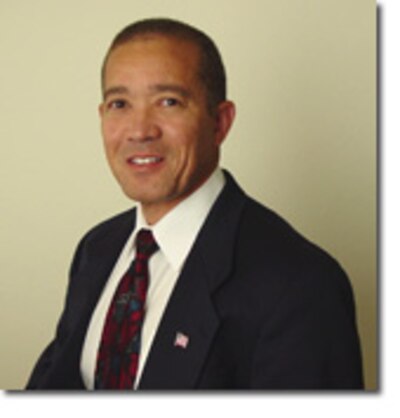
COLORADO SPRINGS – In a little less than four years, Mike Miles has upended a district known mostly for poverty and poor performance and created a home for some of the state’s boldest education reforms.
This week, even as critics lament the timidity of the state’s Race to the Top effort around teacher quality, Harrison School District 2 is preparing to launch a merit-pay plan that differs markedly from longer-running and better-known efforts in Denver and Douglas County.
Incentives play no part in the plan created by Miles, the superintendent here since 2006. There are no bonuses for teaching in struggling schools. Teachers don’t pocket a couple thousand bucks more if their students do better than expected on state tests.
Instead, teachers in Harrison will soon have their entire salaries based on a combination of their annual evaluations and their students’ academic progress.
No longer will teachers get annual raises for another year on the job or for taking more college classes – the way most districts in Colorado and across the country pay their instructors.
These changes are made easier by the fact that Harrison teachers do not have collective bargaining rights.
Once the new plan launches, Miles estimates only about 20 percent of teachers will get a raise every year. But starting pay will be higher and those raises, when they come, will be bigger – $3,000 to $4,000 initially and then $6,000 to $10,000.
“In almost any district in Colorado, even if your evaluation is not satisfactory, unless you are removed from the classroom, you will get a raise,” Miles said. “That is the key question – if you’re not proficient, why should you get the same exact advancement as a proficient teacher?”
A new career ladder
Teachers in Harrison District 2, which enrolls 11,000 students just south of Colorado Springs District 11, now start at $32,914 and can make up to $68,039 if they earn a doctorate and work 27 years.
Under the new plan, teachers start at $35,000 and can earn up to $90,000.
There are nine levels for teachers under the new plan, from “Novice” to “Master.”
“It is possible for a person to go from year to year and make it from novice to master in nine years,” Miles said. “That is unlikely. The performance standards are pretty high.”

Moving from one level to the next gets progressively harder. For the first step, from “Novice” to “Progressing I,” a teacher needs only a satisfactory evaluation. Every other step requires evidence of student academic progress.
After a teacher achieves level 4 or “Proficient,” which pays $48,000, other factors are considered, such as whether a teacher is showing leadership by coaching or mentoring others.
“What we’re saying is, you have to be good at your classroom stuff, you have to be good at achievement,” Miles said, “but if you want to make the higher money, you’ve got to be a leader, you’ve got to contribute, you’ve got to keep learning.”
Continuing education does matter on the new ladder. To get to $90,000, a teacher needs at least a master’s degree as “evidence of lifelong learning,” another factor considered at the higher end.
Paying for the plan
Principals in the Harrison district’s 25 schools are now working on placing their teachers on one of those nine levels.
No current teacher will make less under the new system, even if they’re placed at a lower level. And, no teacher will get a raise of more than $8,000 in the initial placement round.
“Everybody who’s been here one year, next year, they’ll be making $38,000,” Miles said. “So already, there’s going to be a huge pay increase on the earlier end of the scale.”
The plan is expected to cost $1 million more per year, taken largely from stipends and bonuses now paid to teachers.
Up to $350,000 will come from eliminating the extra pay given to secondary teachers who serve as department chairs. Another $250,000 will come from getting rid of the rewards given to teachers who are absent fewer than seven days during the school year.
“We’re saying look, like any other professional, you shouldn’t need attendance incentives,” Miles said. “If you want to do well, come to work.”
Harrison has 710 teachers and 90 percent – or 640 to 650 – will be paid in the new system starting this fall. The district is still figuring out a plan for those in specialized areas such as speech pathologists.
Based on estimated teacher placements, 15 to 20 percent of Harrison’s teachers will not see a difference in pay next year. Of those who do, the average raise will be $2,200 to $2,300.
Another 15 to 20 percent are expected to be placed in the highest levels, earning at least $54,000.
How achievement is measured

Placement – and advancement – under the plan is based on combining an evaluation of a teacher’s classroom performance and a review of student achievement.
The two components are worth roughly equal in advancing in the first two levels – so a “Progressing” on an evaluation and a “Proficient” on the achievement review will land a teacher in the middle, or the “Progressing II” level.
But to reach the proficient level, a teacher must be proficient in both evaluation and achievement.
Harrison’s achievement review is multi-faceted, relying on national, state, district and school tests. Each review has eight areas and adds up to a total of 48 points.
In all but one area, where the teacher picks a goal, the teacher gets to choose the best of several different ways of looking at the results.
For example, with the state CSAP exams, the teacher can pick results of her class by status – at least 50 percent of students passed the exam, for example. Or she can pick results by growth – the median growth percentile of the class was 50 or higher in each discipline taught.
One area looks at schoolwide results, rather than a single class, and other areas consider “academic peer groups,” where students in a class are compared to other students with similar academic progress.
In other words, it’s complex.
“Frankly, it’s over 100 pages and … it does initially overwhelm you,” said Laura Stephens, a social studies teacher at Sierra High School and the president of the Harrison Education Association.
Union approval not required
In Harrison, Miles does not need the union’s approval.
School board members have repeatedly approved the plan as it’s moved from concept to paper and, in a vote earlier this month, launched it officially for fall 2010.
Deborah Hendrix, the board’s president, and two other incumbents on the five-member board were re-elected in the midst of talks about the plan.
“We did not back off moving forward with this because of the elections,” Hendrix said. “All three of us were re-elected with a very good margin and many of our conversations with voters were very encouraging.”
Neither Stephens nor Mike Stahl, head of the Pikes Peak Education Association, which includes Harrison, said they oppose the plan.
But, “We do feel like it’s been dictated to us,” Stephens said, “even though we may embrace it.”Stahl said teachers, if asked what they would do with $1 million, would never have said, “Pay us more.”
“I don’t think that’s the motivator for teachers,” he said. “I think they would have said, why don’t you reduce my class size? Or, why don’t you take something off my plate? Not, would you pay us more?”
He also points out that research on whether merit pay boosts student achievement is inconclusive.
“I’m not saying I’m opposed to it necessarily,” Stahl said. “I just think that a greater level of collaboration means a greater level of success and there hasn’t been that. It was a done deal the minute it came out past his lips.”
Building up to merit pay
While public talks about the pay plan began last fall, Miles said the reforms he started nearly four years ago have set the stage.
One of the key pieces, which has drawn attention across the state, is a dramatic change in how teachers are evaluated.

State law requires teachers be observed in their classroom only once or twice a year and that they be given one of two ratings – satisfactory or unsatisfactory.
The result is that few teachers or districts take them seriously. An Ed News analysis found nearly 100 percent of teachers in Colorado’s largest districts were rated satisfactory in each of the past three years.
But in Harrison, Miles has made instructional leadership the focus of principals’ jobs – they must observe teachers in their classrooms eight to 16 times each year.
On a recent Wednesday at Harrison’s Bricker Elementary, Principal Amy McCord visited several classrooms, clipboard in hand, marking “spot observation” forms that would later go to teachers.
Last February, 73 percent of classroom teachers in Harrison said the instructional feedback they received “mostly” or “definitely” helped them improve their instruction.
The focus on instruction has been a change for many principals – a little less than half are new since Miles became superintendent.
“There was a huge philosophical shift on how we do business as administrators and what our role is,” said Carmel Middle School Principal Tina Vidovich. “A lot of things didn’t go away, it certainly did add to what we were doing. But I think it set our priorities straight.”
‘We’re ready’
A closer scrutiny of classroom work is linked with a more nuanced evaluation tool.
For Harrison teachers, there’s still an unsatisfactory rating but satisfactory now has six different possibilities, from progressing to proficient to exemplary.
Last year, 22 percent of probationary teachers in Harrison who received evaluations were not proficient. Ten percent of non-probationary teachers – meaning they’d been in the classroom at least three years – also were not proficient.
For Miles, the logical next step is to pay teachers differently based on those different evaluation results.
“The reason why this is pay for performance is that you actually will get compensated differently,” he said. “One of the philosophical things we have to get over in our profession is we are so tied to equity … and it is so hard for some teachers to say, look, I’m getting a raise and that person isn’t.”
Adding achievement into the mix makes sense because the district has created an assessment system and trained principals and teachers in using the data, he said.
Even electives teachers use tests and are being included. Art teachers across the district, for example, assign their students a common art project; out-of-district art teachers then score them.
“You should not tie compensation to evaluation unless the rest of these things are in place,” Miles said. “If you’re not giving instructional feedback, there’s no way to have an effective evaluation system. If you don’t have an effective evaluation system then you won’t have a good professional development plan. If you don’t have instructional leadership, you can’t do any of these.
“We have worked on this for three and a half years, four years, so we are ready to tie these two together,” he said. “People think it’s just throwing one more thing on top of a broken system and it ain’t going to work. But our system is aligned.”
To learn more:
Click here to see a snapshot of Harrison District 2’s demographics and student performance.
Click here to read Harrison Superintendent Mike Miles’ description of the new pay plan.
Click here to see brief descriptions of four other merit pay plans in Colorado.
Nancy Mitchell can be reached at nmitchell@pebc.org or 303-478-4573.
